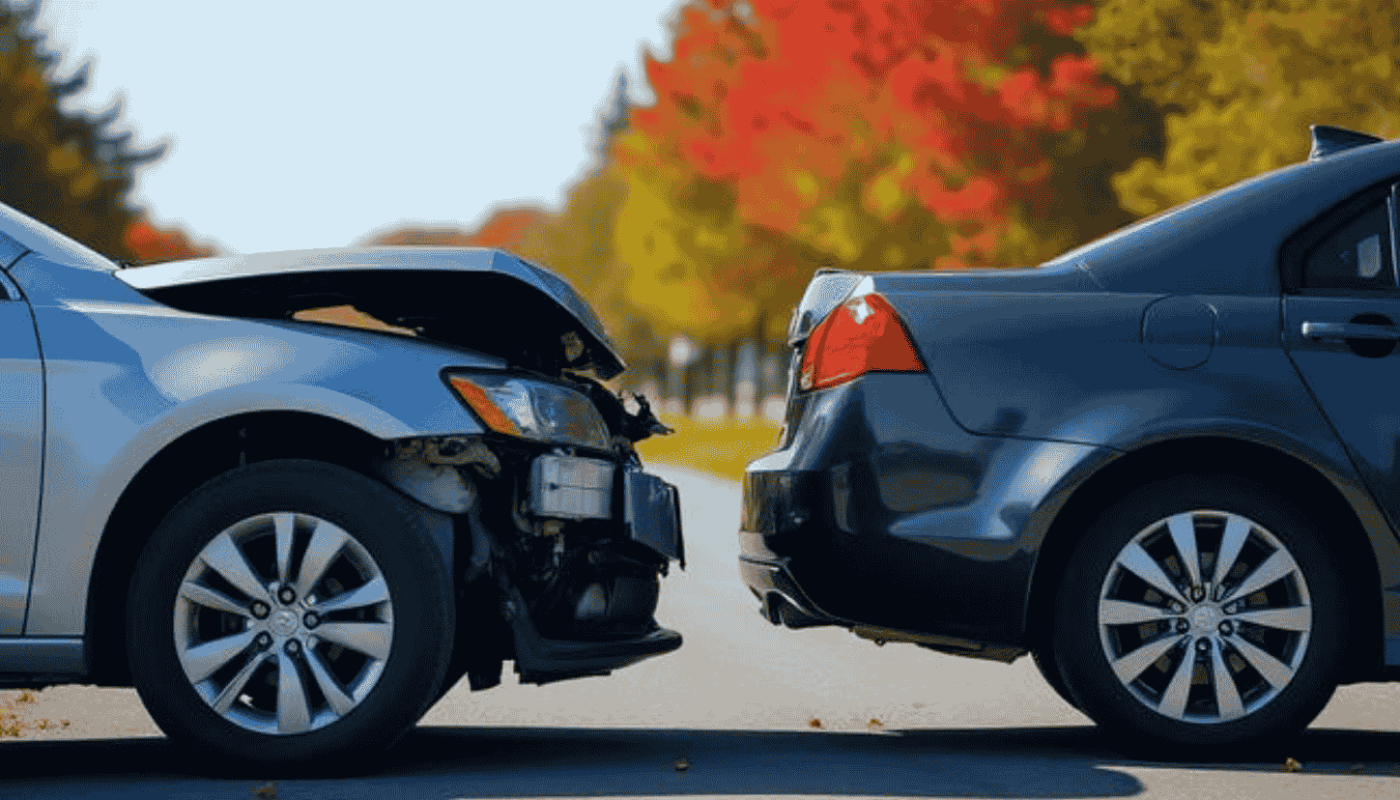Auto insurance is more than just a legal requirement in the United States—it’s a financial safety net that protects you, your passengers, and your vehicle in the event of an accident or other unforeseen incidents. However, with so many coverage options, policy limits, and state-specific regulations, it’s easy to feel overwhelmed when trying to determine if your auto insurance is adequate for your needs.
In this article, we’ll dive deep into the intricacies of auto insurance coverage, explore how to evaluate your current policy, and provide actionable tips to ensure you’re fully protected. We’ll also discuss the latest trends and updates in the auto insurance industry, helping you make informed decisions about your coverage.
Understanding Auto Insurance Coverage: A Comprehensive Breakdown
Auto insurance policies are made up of several types of coverage, each serving a specific purpose. Understanding these components is the first step in determining whether your policy meets your needs.
1. Liability Coverage
Liability coverage is the foundation of most auto insurance policies and is required in nearly every state. It protects you financially if you’re at fault in an accident that causes injury or property damage to others. Liability coverage is divided into two main categories:
- Bodily Injury Liability (BIL): This covers medical expenses, lost wages, and legal fees for the other party if you’re responsible for an accident. For example, if you cause a crash that injures another driver, BIL will pay for their hospital bills and rehabilitation costs.
- Property Damage Liability (PDL): This covers the cost of repairing or replacing the other party’s property, such as their vehicle, fence, or mailbox, if you’re at fault.
Why It Matters: State minimum liability limits are often too low to cover significant accidents. For instance, if you cause a multi-car collision with extensive injuries, the medical bills could easily exceed
100,000.Ifyourpolicyonlycovers
100,000.Ifyourpolicyonlycovers25,000, you’ll be personally responsible for the remaining $75,000. To avoid this, consider increasing your liability limits or purchasing an umbrella policy for additional protection.
2. Collision Coverage
Collision coverage pays for repairs to your vehicle if it’s damaged in an accident, regardless of who is at fault. This type of coverage is especially important if you have a newer or high-value car.
Example: If you hit a tree or another vehicle, collision coverage will cover the cost of repairing your car, minus your deductible.
Why It Matters: If you’re financing or leasing your vehicle, your lender will likely require collision coverage. However, if you own an older car with a low market value, you might consider dropping this coverage to save on premiums.
3. Comprehensive Coverage
Comprehensive coverage protects your vehicle from non-collision-related incidents, such as theft, vandalism, natural disasters, or hitting an animal. It’s often paired with collision coverage as part of a “full coverage” policy.
Example: If your car is stolen or damaged in a hailstorm, comprehensive coverage will pay for repairs or replacement.
Why It Matters: Comprehensive coverage is particularly valuable if you live in areas prone to severe weather, high crime rates, or wildlife activity. However, like collision coverage, it may not be necessary for older vehicles with low replacement costs.
4. Personal Injury Protection (PIP)
PIP, also known as no-fault insurance, covers medical expenses for you and your passengers, regardless of who caused the accident. It may also cover lost wages, rehabilitation costs, and even funeral expenses.
Why It Matters: PIP is required in no-fault states like Florida, Michigan, and New York. Even in at-fault states, PIP can provide additional financial protection, especially if you don’t have health insurance.
5. Uninsured/Underinsured Motorist Coverage (UM/UIM)
UM/UIM coverage protects you if you’re involved in an accident with a driver who has little or no insurance. It can cover medical expenses, lost wages, and even property damage.
Why It Matters: According to the Insurance Research Council, about 1 in 8 drivers in the USA are uninsured. Without UM/UIM coverage, you could be left paying for damages out of pocket.
6. Gap Insurance
Gap insurance covers the difference between your car’s actual cash value and the amount you owe on your auto loan or lease if your vehicle is totaled or stolen.
Example: If you owe
25,000onyourcarloanbutyourcarisonlyworth
25,000onyourcarloanbutyourcarisonlyworth20,000 at the time of the accident, gap insurance will cover the $5,000 difference.
Why It Matters: Gap insurance is essential for new cars, which depreciate quickly. Without it, you could end up owing thousands of dollars on a car you no longer have.
How to Determine if Your Coverage is Enough
1. Assess Your Financial Situation
- Savings and Assets: If you have significant savings or assets, you may need higher liability limits to protect yourself from lawsuits. For example, if you’re sued for
- 500,000afteranaccidentandyourpolicyonlycovers
- 500,000afteranaccidentandyourpolicyonlycovers100,000, your personal assets could be at risk.
- Deductible: A higher deductible lowers your premium but increases your out-of-pocket expenses in the event of a claim. Choose a deductible you can comfortably afford.
2. Evaluate Your Vehicle’s Value
- New vs. Old Cars: For new or high-value vehicles, comprehensive and collision coverage are typically worth the cost. For older cars, consider dropping these coverages if the premiums exceed the car’s value.
- Depreciation: Keep in mind that cars depreciate over time. Regularly review your policy to ensure you’re not over-insuring an older vehicle.
3. Consider Your Driving Habits
- Commute and Mileage: If you have a long commute or drive frequently, you’re at higher risk of accidents. Consider higher liability limits and PIP coverage.
- Ridesharing or Delivery: Personal auto insurance policies typically don’t cover accidents that occur while driving for ridesharing or delivery services. You may need a commercial policy or a rideshare endorsement.
4. Review State Requirements
- Minimum Coverage: Each state has different minimum coverage requirements. For example, Texas requires 30/60/25 coverage (
- 30,000forbodilyinjuryperperson,
- 30,000forbodilyinjuryperperson,60,000 per accident, and $25,000 for property damage), while Maine requires 50/100/25.
- Adequacy of Minimums: State minimums are often insufficient for serious accidents. For example, $25,000 in property damage liability may not cover the cost of repairing a luxury vehicle.
5. Factor in Your Lifestyle
- Family Considerations: If you have a family, ensure your policy includes adequate medical payments coverage and PIP.
- Hobbies and Activities: If you frequently transport expensive equipment (e.g., sports gear or musical instruments), consider adding additional coverage.
Common Mistakes to Avoid
- Choosing the Cheapest Policy: While saving money is important, the cheapest policy may not provide adequate coverage. For example, a policy with low liability limits could leave you financially vulnerable in the event of a major accident.
- Ignoring Uninsured Motorist Coverage: With millions of uninsured drivers on the road, UM/UIM coverage is essential. Without it, you could be left paying for damages caused by an uninsured driver.
- Overlooking Discounts: Many insurers offer discounts for safe driving, bundling policies, or installing anti-theft devices. Failing to take advantage of these discounts could mean paying more than necessary.
- Failing to Update Your Policy: Life changes, such as moving, buying a new car, or adding a teen driver, can impact your insurance needs. Regularly review and update your policy to ensure it reflects your current situation.
Latest Trends in Auto Insurance
1. Usage-Based Insurance (UBI)
- UBI programs use telematics devices or mobile apps to track driving behavior, such as speed, braking, and mileage. Safe drivers can earn significant discounts on their premiums.
2. Digital Transformation
- The insurance industry is embracing technology, with AI-powered chatbots, mobile apps, and online claims processing making it easier for customers to manage their policies.
3. Rising Premiums
- Due to factors like inflation, increased repair costs, and more severe weather events, auto insurance premiums have been rising. Shopping around and comparing quotes can help you find the best deal.
4. Focus on Sustainability
- Some insurers are offering discounts for eco-friendly vehicles or promoting paperless policies to reduce their environmental impact.
How to Enhance Your Auto Insurance Coverage
- Increase Liability Limits: If you have significant assets, consider purchasing umbrella insurance, which provides additional liability coverage beyond your auto policy.
- Add Roadside Assistance: This optional coverage can be a lifesaver if you experience a breakdown, flat tire, or lockout.
- Consider Rental Reimbursement: If your car is in the shop after an accident, this coverage pays for a rental car.
- Explore New Discounts: Ask your insurer about discounts for things like good grades (for student drivers), military service, or being a member of certain organizations.
Final Thoughts
Determining whether your auto insurance coverage is enough for your needs requires careful consideration of your financial situation, driving habits, and lifestyle. While state minimums provide a baseline, they may not offer sufficient protection in the event of a serious accident. By regularly reviewing your policy, exploring additional coverage options, and staying informed about industry trends, you can ensure that you’re adequately protected on the road.
Remember, auto insurance is not just a legal requirement—it’s a safety net that provides peace of mind. Don’t wait until it’s too late to evaluate your coverage. Take the time to assess your needs and make adjustments as necessary. After all, when it comes to protecting yourself, your passengers, and your vehicle, it’s better to be over-prepared than underinsured.



